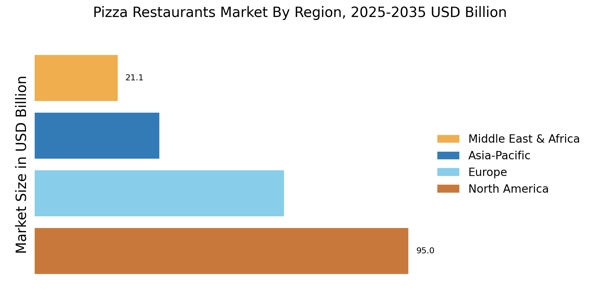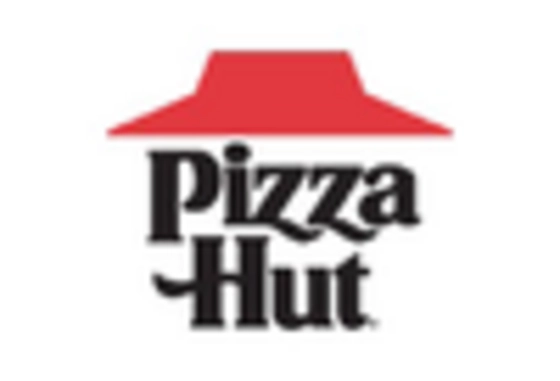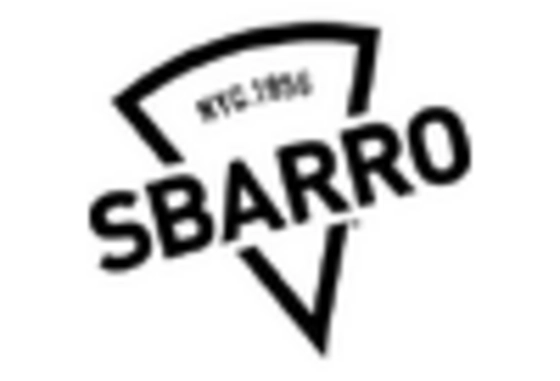The Pizza Restaurants Market is characterized by a dynamic competitive landscape, driven by evolving consumer preferences and technological advancements. Major players such as Domino's Pizza (US), Pizza Hut (US), and Papa John's (US) are at the forefront, each adopting distinct strategies to enhance their market positioning. Domino's Pizza (US) emphasizes digital transformation, leveraging its robust online ordering system and delivery infrastructure to capture a larger share of the market. Meanwhile, Pizza Hut (US) focuses on menu innovation and partnerships, aiming to attract a diverse customer base through unique offerings and collaborations. Papa John's (US), on the other hand, appears to prioritize sustainability initiatives, integrating eco-friendly practices into its operations, which resonates with the growing consumer demand for responsible dining options. Collectively, these strategies contribute to a competitive environment that is increasingly centered around technology, sustainability, and customer engagement.
In terms of business tactics, companies are increasingly localizing their supply chains and optimizing operations to enhance efficiency and responsiveness. The market structure is moderately fragmented, with a mix of large chains and regional players competing for market share. This fragmentation allows for a variety of consumer choices, while the collective influence of key players like Domino's Pizza (US) and Pizza Hut (US) helps to shape industry standards and trends.
In September 2025, Domino's Pizza (US) announced a significant expansion of its drone delivery service, aiming to enhance delivery speed and efficiency. This strategic move not only positions Domino's as a leader in innovative delivery solutions but also reflects a broader trend towards automation in the food service industry. By investing in drone technology, Domino's seeks to meet the increasing consumer demand for quick and convenient dining options, potentially setting a new standard for delivery services in the pizza sector.
In August 2025, Pizza Hut (US) launched a new plant-based pizza line in collaboration with a leading food technology company. This initiative underscores Pizza Hut's commitment to catering to the growing vegetarian and vegan market segments. By diversifying its menu offerings, Pizza Hut not only attracts health-conscious consumers but also aligns itself with the global shift towards more sustainable food choices. This strategic partnership may enhance brand loyalty and drive sales in an increasingly competitive market.
In July 2025, Papa John's (US) unveiled its new sustainability program, which includes a commitment to sourcing 100% of its ingredients from sustainable farms by 2027. This initiative is indicative of a broader trend within the industry, where consumers are increasingly prioritizing sustainability in their dining choices. By positioning itself as a leader in sustainable practices, Papa John's aims to differentiate itself from competitors and appeal to environmentally conscious consumers, potentially enhancing its market share in the long term.
As of October 2025, the competitive trends within the Pizza Restaurants Market are heavily influenced by digitalization, sustainability, and the integration of artificial intelligence. Companies are forming strategic alliances to enhance their technological capabilities and improve operational efficiencies. The shift from price-based competition to a focus on innovation and technology is evident, as brands seek to differentiate themselves through unique offerings and reliable supply chains. Looking ahead, competitive differentiation will likely evolve further, with an emphasis on customer experience and sustainable practices becoming paramount in shaping the future of the pizza restaurant landscape.


















Leave a Comment